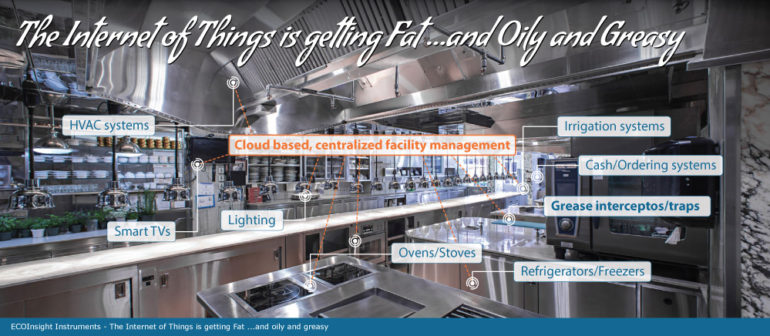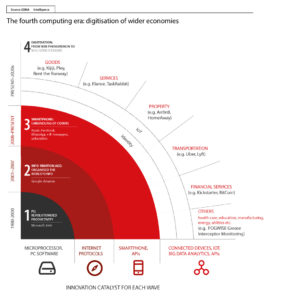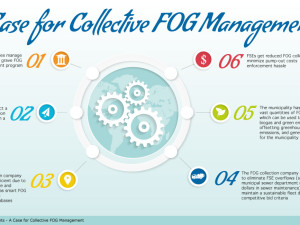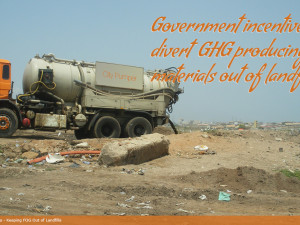
The Internet of Things is getting Fat …and Oily and Greasy
The Internet of Things (IoT) is expanding more and more into all aspects of life, and that growth pattern will accelerate exponentially as more consumer and commercial technologies embrace it. Working on the idea that every electronic device can and should connect to the “cloud”, tech companies like Cisco and Intel are estimating that the number of connected devices worldwide will rise from 15 billion today to 50 – 200 billion by 2020!
Consumers have signalled their overwhelming acceptance of the IoT through their buy-ins to gadgets such as FitBit activity monitors, NEST thermostats, and Phillips Hue light bulbs that can be controlled using a smart phone.
Digitisation impact now spreading across all sectors
The commercial and industrials markets (e.g. healthcare, construction, environmental) have also come on board, from garbage dumpsters that wirelessly report to the waste management company when they are nearing capacity and need to be emptied, to construction companies embedding wireless sensors within concrete foundation piles to monitor and ensure the quality and integrity of a structure.
The widespread availability of wireless internet and Wi-Fi enabled devices is allowing the influence of the digital economy to spread into all aspects of everyday life.
Even the restaurant industry has joined the IoT revolution. Customers are now familiar with the IoTs influence in the dining room, from self-ordering on tablets, to eventually paying their bill, right at the table. It provides them with the speed and convenience they crave, and the restaurant improves operational efficiencies, and increases table turnover and sales.
But the unique application for combined sensors, actuators, and networked intelligence is really making inroads behind the scenes at your favourite local eating establishment.
Restaurant equipment manufacturers (e.g. commercial ovens, refrigerators, freezers, HVAC systems, lighting, signage, thermostats, and irrigation systems) are now being shipped with integrated wireless capabilities. Not only can they send real-time data back to the manufacturer (e.g. status, temperature, moisture levels, fault codes) for technical support and maintenance purposes, but this equipment can also be controlled (turned on/off, cycled back) remotely.
Recognizing the potential, several innovative software companies have developed cloud-based tools that that collect, monitor, and analyze information from ALL these different restaurant systems, and display in on a unified dashboard.
Unlocking the potential of the digital economy
Using a computer or smart phone, restaurant facility managers can view and manage critical systems for a single store location, or for hundreds of locations across a region. This IoT application is allowing restaurants to maximize the lifetimes of assets, reduce energy and operational costs, and improve food safety.
Even the lowly grease interceptor, buried in the parking lot or under the kitchen floor, has joined IoT framework. Ecoinsight Instruments has developed FOGWISETM, a wireless smart meter that measures the levels of Fats, Oils, and Grease (FOG) and solids captured.
By utilizing this “fatty” information, facility managers can “slim” down their budgets through cost savings on optimized pump out schedules, reduced plumbing expenses, improved compliance with local ordinances, and the reduced the risk of catastrophic sewer backups.
Internet enabled, wireless technology has transformed the way in which economic activity is carried out in virtually all the sectors of the global economy, allowing more efficient ways for workers and businesses to communicate and access information. This can no longer be perceived as a passing fad but instead as a fact of life. The success and profitability of countless businesses will be influenced by the speed with which this new digitisation era will be adopted as everyday reality.





